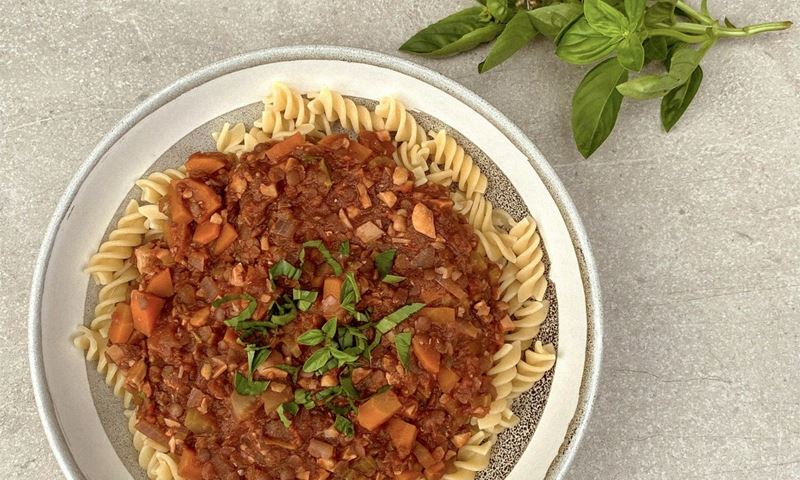Joanna McMillian is a PHD qualified nutritionist and dietitian, who is also a mum and understands the difficulty of making quick and healthy meals that your whole family will eat.
Taking your own lunch to work has many advantages – it saves you money, helps to limit food waste (leftovers are perfect) and you almost certainly end up with a more nutritious meal.
And if you’re a parent of school aged kids, you will be very familiar with the daily challenge during school term of coming up with something that is good for them, but that they will also like and eat.
Whether you’re creating a lunchbox for yourself or your kids, here is my guide to help you get the nutrition balance spot on.
Vegetables
Think first about veggies. If you don’t get at least one to two serves into your lunch, you will likely struggle to meet your daily recommendations. Veggies add important nutrients, fibre and phytochemicals such as antioxidants.
- Be generous with adding shredded, grated or sliced veggies to sandwiches, rolls and wraps.
- Some kids may prefer a few veggies on the side – try popping in a sliced raw carrot, qukes (mini cucumbers), cherry tomatoes or a few slices of red capsicum.
- Leftover grilled or roast veggies are a delicious addition.
- Throw together a big salad with plenty of variety – just be sure to keep the dressing in a separate small container to add just before eating to keep your salad crisp and fresh.
- Chop up veggies into batons and pop in a container along with a tub of hummus, guacamole, salsa or tzatziki – a perfect snack for afternoon tea.
Protein
Now you want to add a good source of protein. This will help you to feel satisfied with your lunch and curb hunger in the afternoon. Spreading your protein intake out over the day is also key for preserving (or building for those doing strength training) your muscle mass – key for long term weight control.
- Cook some extra lean meat or salmon the night before and add this to sandwiches, rolls, wraps and salads.
- Canned or pantry packs of fish are a convenient and budget-friendly source of protein, also delivering a good dose of healthy long chain omega-3 fats, which are essential for both children and adult brains.
- Plant protein sources include tofu – ready marinated firm tofu is delicious in a sandwich or cut into cubes and tossed through salad – canned beans, chickpeas or lentils, and nuts either whole or as a nut butter. Primary age children are usually not allowed to take nuts to school, but most high schools allow them. Very few Aussie adults or kids are eating enough nuts, so try to ensure a daily handful.
- Dairy foods are excellent sources of protein. Add sliced or grated cheese to sandwiches, rolls and wraps. Crumble feta through a salad. Fill your own reusable container with Greek natural yoghurt and add fresh berries as a snack. Whip up a smoothie with milk, yoghurt and fruit and pour into a flask to keep cold – you can add a scoop of nut butter for high school kids and adults.
- Hard boiled eggs can be popped in whole as a snack, or slice or mash them with a little mayo as a sandwich filling. Boil up a few at a time and keep them in the fridge ready to go.
Smart carbs
Next up is what I call your smart carb. Carbs have been unfairly demonised as being fattening, when in fact choosing the right carb-rich foods is key for brain function and energy levels for kids and adults. The key is to go for whole foods and limit or avoid those that are heavily refined.
- Wholegrains and legumes are ideal, and these foods are not just carbs – they add good levels of plant protein and a host of other nutrients at the same time.
- Choose wholegrain breads, rolls and wraps.
- Add cooked brown or black rice, wholemeal pasta or quinoa to salads. Or reheat leftovers including these foods.
- Add canned beans or chickpeas to a tuna or salmon sandwich filling or toss through a salad. A can of baked beans in tomato sauce is an excellent snack.
- Starchy veggies in their skins are wonderfully nutritious as they add resistant starch – a gold star fuel for the healthy bugs living in the gut. Try adding cooked and cooled potatoes or sweet potato to a salad. If you have access to a microwave you can reheat a cooked potato and fill with a can of baked beans, cottage cheese, leftover bolognese sauce or a packet of flavoured or plain tuna.
Healthy fats
Including a healthy source of fat helps to fill you up and delivers fat-soluble nutrients and phytochemicals.
- Use avocado or hummus in place of butter in sandwiches, rolls and wraps.
- Add chopped avocado to salads.
- Make salad dressings with extra virgin olive oil and vinegar or lemon juice.
- Snack on nuts or nut butter spread on wholegrain crackers of bread.
Keep snacks simple
Some simple, but healthy snack options include:
- A piece of fruit
- A fruit salad with natural yoghurt
- A handful of nuts
- A good quality muesli or oat bar (the health star ratings work pretty well here and will guide you to the best choices).
Finally, don’t forget a refillable stainless-steel water bottle. Water should be the principal drink for both kids and adults alike.


